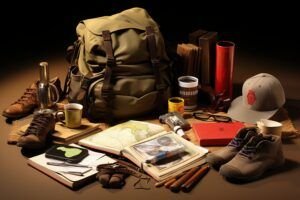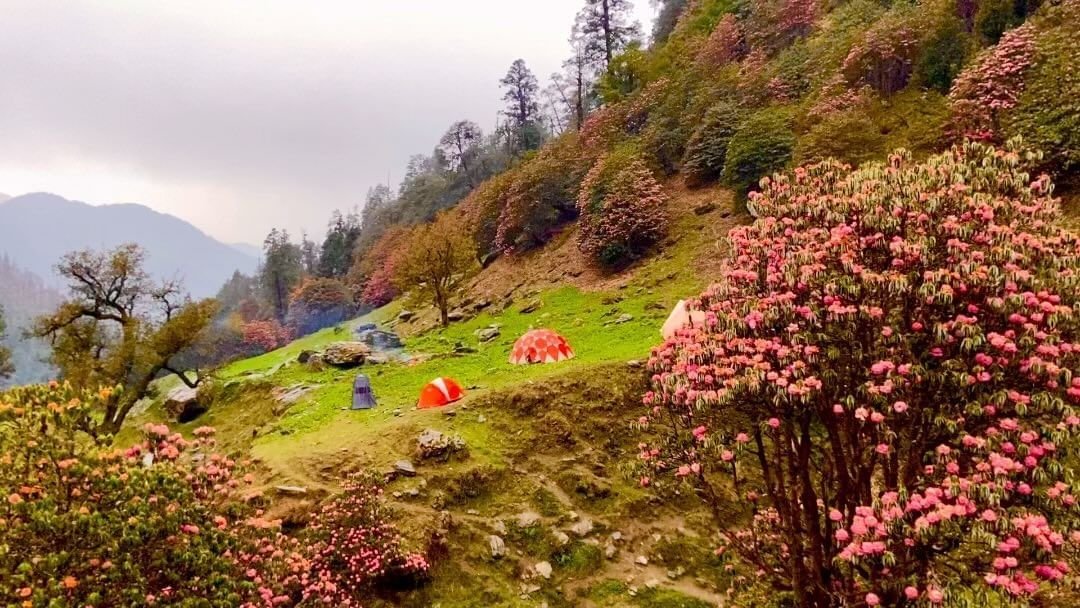Imagine standing atop a lush green meadow, enveloped by the pristine beauty of the Himalayas. This is Dayara Bugyal, one of the most stunning alpine meadows in Uttarakhand. The Dayara Bugyal trek offers adventure enthusiasts, nature lovers, and travel bloggers a breathtaking experience that balances physical challenge with natural splendor. In this blog post, you’ll learn essential tips to make your trekking experience to Dayara Bugyal unforgettable. From preparation and packing to understanding the local culture, we’ve got you covered.
Why Trek to Dayara Bugyal?
Dayara Bugyal is not just another trek; it’s a mesmerizing experience. Located at an altitude of about 12,000 feet, this meadow provides panoramic views of the surrounding Himalayan peaks. The trek is ideal for both novice and experienced trekkers, offering a moderate level of difficulty that makes it accessible yet challenging. Besides, trekking through dense forests, quaint villages, and finally, the expansive meadows, makes it a dream destination for nature lovers and adventurers alike.
Best Time to Visit
Timing your trek to Dayara Bugyal is crucial for an enjoyable experience. The best time to visit is from May to November, excluding the monsoon months of July and August when the trails can be slippery and dangerous. In spring, you’ll witness vibrant blooms, while autumn offers clear skies and splendid views of snow-capped peaks. Winter treks are also possible, but they require more preparation and experience due to the snow cover.
Physical Preparation
Trekking to Dayara Bugyal requires a good level of physical fitness. Start prepping at least a month before your trek with a mix of cardiovascular exercises, strength training, and flexibility exercises. Focus on building stamina through activities like running or cycling. Strengthen your core and leg muscles with squats and lunges. Yoga can help improve your flexibility, which is crucial for navigating uneven terrains.
Packing Essentials

Packing smartly can make or break your trekking experience. Here’s a list of essentials you should bring along:
• Clothing: Layered clothing to deal with fluctuating temperatures. Quick-dry shirts, thermal wear, and a waterproof jacket are must-haves.
• Footwear: Sturdy, well-fitted trekking boots with good ankle support.
• Gear: A reliable backpack, trekking poles, and a hydration system.
• Accessories: Sunglasses, sunscreen, a hat, and gloves.
• Miscellaneous: First-aid kit, toiletries, and personal identification.
Acclimatization Tips
Acclimatization is key when trekking at high altitudes to avoid altitude sickness. Spend a day at a lower altitude, such as Raithal, to allow your body to adjust. Hydrate well and avoid alcohol and caffeine. Listen to your body; if you feel symptoms like headache or dizziness, take it slow and rest.
Navigating the Trail
The route to Dayara Bugyal is well-marked but having a map or GPS can be handy. The trek begins from Barsu or Raithal, both charming villages that provide a glimpse into local life. The trail passes through dense oak and rhododendron forests, opening up to wide meadows. Keep an eye out for landmarks and follow the trekking groups if you’re unsure about the path.
Environmental Considerations
Dayara Bugyal is a pristine environment, and it’s our responsibility to keep it that way. Follow the principles of Leave No Trace. Carry reusable water bottles and avoid single-use plastics. Pack all your trash and bring it back to dispose of properly. Respect local flora and fauna, and stick to marked trails to minimize impact.
Understanding Local Culture
Interacting with locals can enrich your trekking experience. The villagers in Raithal and Barsu are warm and welcoming. Learn a few basic phrases in Hindi or Garhwali to communicate better. Respect local customs and traditions, and always ask for permission before taking photographs of people or their homes.
Safety Tips
Safety should be your top priority. Always trek in a group and keep emergency contact numbers handy. Inform someone about your trekking plan and expected return date. Carry a basic first-aid kit and know how to use it. Be mindful of weather changes and have a contingency plan in case of sudden storms or other emergencies.
Photography Tips
Dayara Bugyal offers endless opportunities for breathtaking photographs. Here are some tips to capture the beauty:
• Golden Hours: Shoot during sunrise and sunset for the best light.
• Rule of Thirds: Use the rule of thirds to compose your shots, placing key elements off-center for more dynamic images.
• Wide Angles: Use a wide-angle lens to capture the expansive meadows and towering peaks.
• Detail Shots: Don’t forget to capture the little details—flowers, streams, and wildlife add depth to your photo collection.
Food and Water
While trekking, it’s crucial to stay fueled and hydrated. Carry energy bars, nuts, and dried fruits for quick snacks. Local homestays and dhabas usually provide simple but nutritious meals. Always carry a water bottle and use water purification tablets or a portable filter to ensure safe drinking water.
Budgeting Your Trek
A well-planned budget can enhance your trekking experience. Here are some costs to consider:
• Travel: Transportation to the base village.
• Accommodation: Homestays or tents at various points along the trek.
• Food: Meals and snacks along the trail.
• Guides and Permits: Hiring a local guide and obtaining any necessary permits.
• Gear: Renting or purchasing trekking equipment.
Conclusion
Trekking to Dayara Bugyal in Uttarakhand is more than just an adventure; it’s an opportunity to connect with nature, challenge your limits, and immerse yourself in the local culture. By following these essential tips, you can ensure a safe, enjoyable, and memorable trekking experience. Whether you’re an adventure enthusiast, a nature lover, or a travel blogger, DayaraBugyal has something unique to offer.
Ready to start your adventure? Plan your trek, pack your bags, and head to the Himalayas for “an experience of a lifetime”. For more tips and personalized advice, feel free to reach out to our community of trekkers and experts. Happy trekking!







